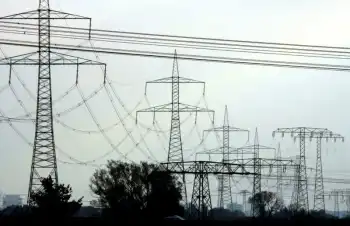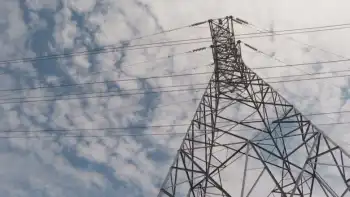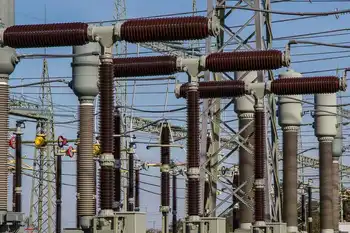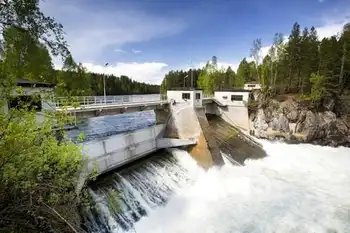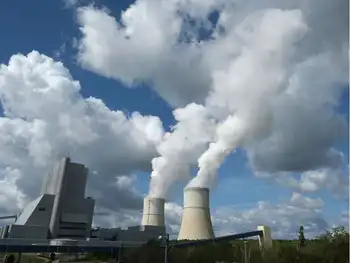ORNL part of project to help power developing nations
By Electricity Forum
NFPA 70e Training - Arc Flash
Our customized live online or in‑person group training can be delivered to your staff at your location.

- Live Online
- 6 hours Instructor-led
- Group Training Available
Grid-appropriate reactors are typically between 250 megawatts and 500 megawatts, making them far more affordable and practical for developing nations than the typical 1,300-megawatt commercial light-water reactor. This is in part because these nations have smaller power grids and less well-developed technical infrastructures.
"These reactors hold the promise of economic development because they are projected to be able to be built in just a little more than half the time required to build a large power plant," said ORNL's Dan Ingersoll, a member of the Nuclear Technology Programs Office and Global Nuclear Energy Partnership.
With a staggered build strategy, two or more reactors can be built in a series, which minimizes cash outlay and provides for quicker return on investment. Many nations have entered the nuclear age using reactors of this size range, Ingersoll noted, and the Global Nuclear Energy Partnership sees this as a strength to build on as it works to facilitate the global expansion of nuclear energy.
"The ultimate goal is energy security for parts of the world that are facing rapidly rising needs for electricity," Ingersoll said. "Next-generation appropriately sized reactors will be safer, simpler to operate, highly secure and will reduce proliferation risk."
Making nuclear power an option for developing countries is of great importance, Ingersoll said, because their energy demand will be met regardless of whether they use nuclear energy. By using nuclear energy, countries can offset negative consequences - such as higher prices caused by increased demand - of expanded use of fossil fuels. Nuclear power also could slow the rate of greenhouse gas emissions.
"Equally important is the fact that affordable electricity translates into a stronger economy, a more skilled workforce and improved quality of life for people living in these countries," said Ingersoll, adding that global energy demand is expected to be 50 percent higher in 2030 than it is today. Seventy percent of this growth is expected to come from developing countries, according to the International Energy Agency.
Issues of grid capacity, capital project financing, project risk and other factors limit the majority of the targeted countries to consider only nuclear power plants with less than 700 megawatts capacity. The problem is that for economic reasons, including economies of scale, only large plant designs are commercially available from traditional vendors. That will change if the grid-appropriate reactors campaign is successful.
"This campaign aims to remove the barriers by speeding the development, demonstration and deployment of appropriately sized reactors that can help developing parts of the world safely meet their growing energy needs," Ingersoll said.
While the benefits of nuclear power are obvious, Ingersoll noted that such an endeavor has to be done correctly.
During the coming year, members of the grid-appropriate reactor campaign will develop a solicitation for a public-private partnership to select a U.S.-based light-water reactor design for safety and licensing support beginning in fiscal year 2009. The first reactor could be ready for construction in 2015.
Over the next five years, the target is for DOE to cost-share about 20 percent of the estimated half-billion dollar effort to achieve design certification by the Nuclear Regulatory Commission. This government investment is necessary to offset the additional investment risk associated with developing countries, to level the playing field with other supplier countries and to address unique regulatory and infrastructure issues, Ingersoll said.
"A U.S.-based reactor design with a world-respected Nuclear Regulatory Commission design approval coupled with reliable fuel services would ensure that reactors that meet the highest standards of nuclear safety and security are available to meet this growing demand," Ingersoll said.
Because of the worldwide respect for the NRC, an NRC-certified design will also enable U.S. industry to rapidly gain and hold a competitive advantage in this growing world market, according to Ingersoll.
On the home front, aside from the benefits of decreased world demand for fossil fuels, this effort could lead to specialized uses such as an independent power source for military bases, more cost-effective biofuel production and economical oil shale and tar sand recovery. Ingersoll also expects utilities in many parts of the nation to supplement their power generation needs using these reactors.
Partners for the project include Brookhaven, Pacific Northwest and Idaho national laboratories. Ingersoll expects additional laboratories and universities to join the partnership next year.
This research is funded by the Global Nuclear Energy Partnership. UT-Battelle manages Oak Ridge National Laboratory for the Department of Energy.





